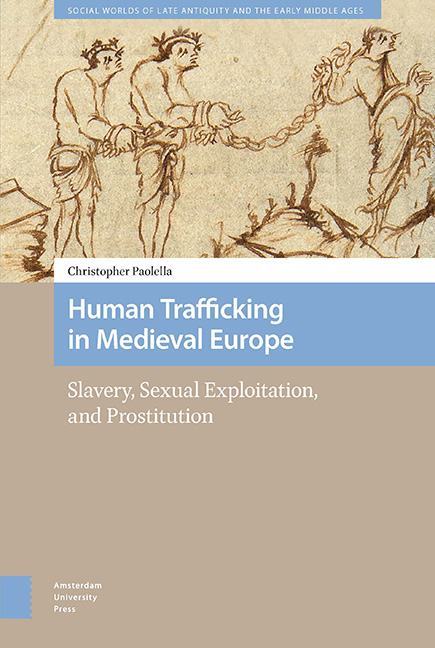Summary
To conclude this study of the history of human trafficking, I consolidate here the numerous arguments put forth. First, human trafficking networks have historically been adaptable, and this adaptability has made them remarkably resilient in the face of ever-changing socioeconomic and political conditions. Second, because of this adaptability, centralized authority committed to the sustained suppression of human trafficking activities has been, and continues to be, necessary to combat traffickers. Third, human trafficking patterns changed dramatically in Western Europe, north of the Pyrenees and Alps, over the course of the twelfth and thirteenth centuries. As agricultural slavery faded and the commercial sex industry grew, traffickers turned from supplying agriculture with legally enslaved labor to supplying the sex industry with legally unenslaved labor. Fourth, this change represented a pivot and not a break from the early medieval slave trade and late medieval sex trafficking, because the experiences of women and children linked the two patterns. Although their legal status differed in the slave trade of Late Antiquity and the early Middle Ages and the sex trafficking networks of the late Middle Ages, their physical, lived experiences of human trafficking nevertheless remained the same. For women and children, the slave trade has always included the constant, looming threat of sex trafficking.
The roles of slaves changed to suit the transactional needs of the moment. Their bodies and labor were the goods and services for barter and the objects of sale on beaches or in slave markets. They were currency for other goods, services, and benefices, and the gifts exchanged between parties in order to establish and maintain the social relationships of elites. Even as the roles of slaves mutated to conform to the patterns of exchange in the moment, traffickers themselves also adapted to suit their immediate circumstances. Traffickers were opportunists who abducted when the moments presented themselves, and they were raiders who abducted as part of larger slaving expeditions. Traffickers sometimes specialized in slave trading, but they could just as easily be merchants who sold human beings along with other wares. Their networks adapted as needs changed and opportunities arose. Networks interlinked to create long-distance networks across the North Atlantic, North, and Baltic Seas, or across the Mediterranean and Black Seas, and broke apart and operated independently of each other as circumstances dictated.
- Type
- Chapter
- Information
- Human Trafficking in Medieval EuropeSlavery, Sexual Exploitation, and Prostitution, pp. 247 - 250Publisher: Amsterdam University PressPrint publication year: 2020



